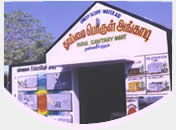
Periwinkle (Tamil name: Nithyakalyani, Hindi name: Sadabahar and Botanical name: Vinca Rosea) is one of the herbal plants that can be grown with moderately saline water irrigation.
- Salt occurs naturally in soils from rocks and minerals and is present in all water except for rainwater.
- Water salinity level is rated by Electrical Conductivity level or EC. This is measured using an instrument called EC Meter. The EC of good water is 0 to 1. Sea water EC is about 45.
- Plants respond to salt differently. Many do not tolerate it at all (salt-sensitive). Others will continue to grow but yields will be substantially reduced when grown with salty water or on saline soil (salt-tolerant). Finally, halophytic (salt-loving) plants actually experience improved growth when given saline or brackish water.
Tamil Nadu Agricultural University (TNAU) conducted on-farm trials on over 20 different medicinal plants:- Trials were conducted with water of salinity level 0 to 10.
- Adathoda, Aloe Vera, Nilavembu, Senna, Nithyakalyani, Coleus, Datura, Eclipta (Karisalanganni), Kanvazhikilangu (Gloriosa), Gymnema (Sakkaraikolli), Thumbai, Thulasi, Kilanelli, Isubgol, Sarpagandha, Manathakkali, Thuthuvalai and Aswagantha were grown successfully by a farmer in Idigarai, Arukutty village irrigated by well water of 2 to 4 EC.
- Another farmer, Madangopal, cultivated the following using well water of 6 EC - Adathoda, Aloe Vera, Senna, Datura, Kanvazhikilangu (Gloriosa), Thulasi, Manathakali and Thuthuvalai.
So, farmers whose irrigation wells having high salinity levels need not lose heart as some of the medicinal plant species irrigated with waters with different salinity levels show good growth prospects.
Also, demand for herbal plants is growing in the market, including for exports.









